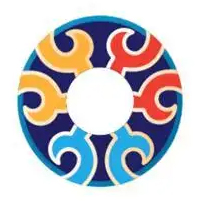The Difference Between Antique and New Cloisonné Bracelets
Cloisonne, also known as "Famille Jia" or "French Blue," is a type of artwork that exhibits the delicate qualities of jade, the brilliance of gemstones, and the refined characteristics of porcelain. Its material remains pristine over time, ensuring it does not oxidize or fade. Even after hundreds of years, its vibrant colors remain untouched, as if it has escaped the erosion of time, forever preserving its youthful allure.
Craftsmanship
Cloisonné production can be divided into two categories: wire cloisonné and painted cloisonné.
Wire Cloisonné
Wire cloisonné is the most complex production process and one of the most familiar cloisonné crafts for the Chinese people. Firstly, the outline of the pattern is traced on the metal base using metal wire, and fixed with natural adhesive. Then, different colors of cloisonné enamel are filled into the outline. These enamel materials are composed of finely ground ores and metal oxides. Next, the metal piece is placed in a special kiln and fired, and the enamel changes color at high temperatures, presenting vibrant colors. Finally, it needs to go through a fine polishing process to level the raised gold wire, making the surface of the cloisonné smooth and dazzling.
Painted Cloisonné
Cloisonne painting is a different process from filigree cloisonne. It directly uses cloisonne enamel for painting. First, a layer of opaque cloisonne glaze is fired on the embryo as the base layer, then the painting is done, and finally it is fired in the kiln. Painting cloisonne was first introduced to China by Western missionaries and merchants, and became popular in the late 17th century.
The development of cloisonne bracelets
As a traditional handicraft, cloisonne bracelets are also constantly developing and improving. Traditional cloisonne bracelets are no longer suitable for modern aesthetics in terms of style and color tone. Therefore, modern cloisonne bracelets have introduced modern techniques such as three-dimensional carving and combined with gem inlay techniques such as Swarovski crystals and other fashionable elements, making the cloisonne bracelets more in line with modern aesthetic standards.
The production technology of cloisonne bracelets originated in Beijing and has now extended to other places such as Baoding, Hebei. This also drives the cloisonne bracelets to be more fashionable and have broader development prospects in terms of styling, with better taste.
Differences between new and old cloisonne bracelets
For cloisonne bracelets, there are differences in production techniques and quality between new and old ones.
First, the old enamel bracelets are made by hand, while the new ones are generally semi-handmade and the body is often mass-produced by machines.
Second, the old ones use purple (red) copper as the base, while the copper in the new ones is of lower quality and relatively soft, resulting in loose joints.
Third, the old ones use authentic enamel powder for firing, so the overall color is darker, while the enamel in the new ones may contain other dyes, resulting in a more vibrant color.
In addition, the old ones often have more sand holes, while the new ones have fewer or even no sand holes.
Furthermore, the old enamel bracelets have a unique charm, while the new ones are usually more exquisite in shape but lack a sense of agility. However, for young people who like bright colors and pursue modern aesthetics, the new ones are more suitable for them.
Finally, the gold-plated parts of the old enamel bracelets use real gold, while the new ones are usually made of alloy materials.
In conclusion, the old Tianjin blue bracelet is strictly handmade according to traditional craftsmanship, which reflects the wisdom of ancient people and traditional handicrafts. It is suitable for collectors and those who appreciate Tianjin blue. For young people who like colorful and beautiful things, the new Tianjin blue bracelet is a better choice. The new bracelet makes full use of scientific technology, and its appearance has been improved. There are almost no sand eyes and firing traces, making it more soft, elegant, and beautiful.

